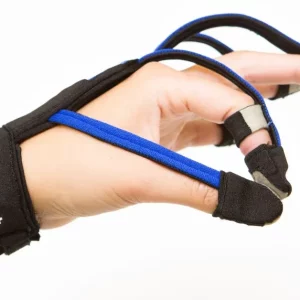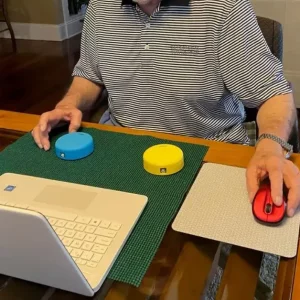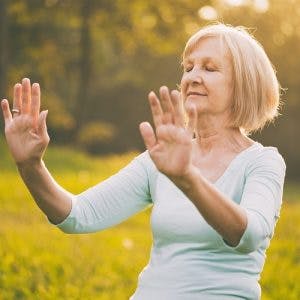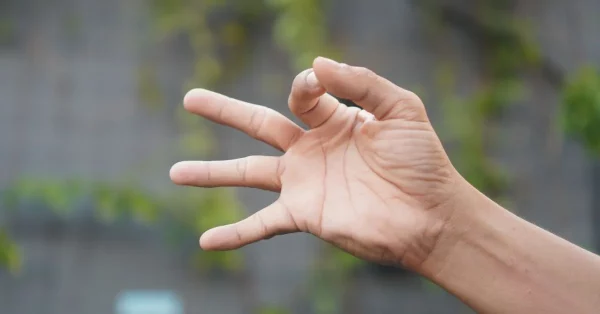Exercise after stroke is crucial for recovery, but knowing exactly what exercises to perform can feel overwhelming. Every stroke is different, and every survivor will experience different secondary effects. This means the best exercise to perform after a stroke varies from person to person. Your therapy team should develop exercise after stroke guidelines that are specific to your needs.
The type of stroke, the area of the brain affected, and symptom severity all impact the type of exercise that will be most beneficial for each survivor. For example, some survivors may be able to perform active exercise immediately after stroke, while others may need to focus on passive exercise first. In addition, some stroke survivors may be able to perform aerobic exercises in addition to walking, while gait training may be the primary focus for others.
It is important for every stroke survivor to work closely with their therapy team for the best recommendations. This will help you create a plan that is specific to your recovery journey so you can reach your own unique goals. To help you navigate that conversation, it can be useful to know the benefits and types of exercise available after stroke.
Why Exercise After Stroke Is Important
Exercise after stroke is critical for two main reasons: rehabilitating the physical effects of a stroke and preventing another stroke from happening. For these reasons, it is important to perform exercise that addresses mobility, strength, and overall cardiovascular health.
Often, a stroke leads to physical impairments such as hemiplegia or hemiparesis. This refers to paralysis or weakness on one side of the body, which can affect many aspects of a survivor’s life. These impairments increase the risk of falling after stroke and reduce efficiency with activities of daily living (ADLs). Therefore, therapists should create a customized post-stroke exercise regimen to help improve safety and independence.
Stroke prevention is another reason why exercise after stroke is vital. According to the American Stroke Association, 1 in 4 survivors will experience a second stroke. Stroke is usually not an isolated incident, and risk factors often precede the stroke. These stroke risk factors can include high blood pressure, high cholesterol, diabetes, and obesity. Fortunately, exercise and other stroke prevention practices can improve all of these conditions.
While exercise is necessary for good health and recovery after stroke, survivors should be mindful of safe techniques to avoid overexercising. Pushing the body too hard can potentially result in regression after stroke or exacerbate conditions like post-stroke fatigue. Stroke patients will see the best results with a balanced regimen created with the help of a therapist.
To get an idea of which exercises your therapy team may recommend, let’s look at the latest guidelines. We will review recommendations on exercise repetition and frequency to help maximize your recovery.
Exercise After Stroke Guidelines
Since stroke causes injury to the brain, survivors can experience physical, cognitive, and even emotional secondary effects. Therefore, the best exercises after stroke depend on your unique symptoms and ability levels, as well as any preexisting medical conditions. Many patients will receive exercise after stroke guidelines and recommendations that prioritize stroke rehabilitation and stroke prevention to help address these concerns.
Here are the current exercise after stroke guidelines.
Early Mobilization
Early mobilization is a valuable tool for those in the acute stage of stroke rehabilitation if the survivor is medically stable. Patients should perform early-stage exercise to their tolerance, including sitting or standing, self-care activities, and low-level walking. This early mobilization can help reduce deconditioning, improve vitals, and decrease the risk of developing other medical complications such as pneumonia.
Aerobic Exercise
Patients should prioritize aerobic exercise for a variety of reasons, including preventing another stroke. That is because aerobic exercise such as walking or arm/leg cycling can improve walking efficiency, increase endurance, and even improve cognition.
Generally, experts recommend aerobic exercise after stroke for 20-60 minutes per day, 3-5 days per week. However, you should adjust the dosage based on your level of fitness and your healthcare provider’s recommendation.
Strength Training Exercise
Experts recommend strength training exercises to help reverse muscle atrophy. This muscle loss typically begins during the hospital stay and continues in the days that follow. Strengthening the muscles can boost independence and improve endurance. It may also help reduce secondary effects such as foot drop.
Patients should perform strength training multiple times per week. Start by talking to your healthcare provider to get an understanding of where you should start based on your condition and background. Then, resistance should be gradually increased over time according to your progress.
Stretching and range of motion exercises
Stretching and range of motion (ROM) exercises are necessary components of any post-stroke exercise program. These exercises can improve flexibility, decrease risk of injury, and help prevent contractures after stroke. A general rule of thumb you can use is perform range of motion exercises 2-3 days a way. Try to hold each stretch for around 10-30 seconds.
Balance exercises and core exercises
Performing balance and core exercises after stroke are recommended to increase safety during activities of daily living and decrease fall risk. These exercises should be incorporated into a stroke exercise program at least 2-3 days per week.
Check out these home balance exercises after stroke.
Gait training exercises
Gait training exercises refer to exercises that address walking. These should be a top priority to help patients get back to “pre-stroke” levels of activity as soon as possible. Gait training can help increase independence with activities of daily living and improve tolerance of prolonged physical activity. Your physical therapist will help you get started with gait training, even if you require assistance at first.
Remember, it is important to work with your therapy team to set your post-stroke exercise goals. Your team will likely include your physical therapist, occupational therapist, and speech therapist. While your PT and OT can provide exercises for your arms, legs, and balance, a speech therapist can provide exercises to improve your speech and swallowing after stroke
Some patients may need to prioritize gait training to develop the motivation for consistent aerobic exercise after stroke. Other patients with mild secondary effects might be able to accommodate both gait training and other forms of aerobic exercise. No matter what your doctor or therapist recommends, one thing remains true throughout the stroke recovery process: consistency and repetition matter.
Repetition is Key for Exercise After Stroke
Some therapists refer to rehabilitation exercises as neuromuscular training, which focuses on training the nerves and muscles to communicate. After a stroke disrupts the pathways between the brain and muscles (resulting in impaired movement patterns), neuromuscular training can help restore movement by activating neuroplasticity.
Neuroplasticity is the brain’s natural ability to reorganize itself and learn new skills. This is how stroke patients can recover lost abilities like walking, dressing, and moving throughout daily life. By practicing therapy exercises after stroke, survivors can rewire these connections to healthy areas of the brain to promote recovery of lost functions.
When discussing the best exercises after stroke with your therapist, you may hear them refer to something called massed practice. This refers to the large number of repetitions used to stimulate neuroplasticity during therapy exercises after stroke.
The brain requires intense repetition to learn new skills because it likes to be efficient. When something is done frequently, the brain learns that the task is important and responds by making that task easier to accomplish. Many therapists emphasize high repetition to help encourage neuroplasticity during rehabilitation. The more you practice an exercise or a task consistently, the easier that task will become.
Getting Ready for Exercise After Stroke
It is important for stroke patients to work closely with their therapy team to develop an exercise plan that accommodates their specific needs and goals. Exercise after stroke guidelines generally includes a unique combination of aerobic exercise, strength training, range of motion, and balance. Exercise after stroke (along with other healthy habits) can maximize recovery and help prevent another stroke.
For an extra boost of motivation, try incorporating gamified rehab equipment like Flint Rehab’s FitMi home therapy into your rehabilitation program. This device is designed to help with neuromuscular training at home and can motivate survivors to perform high repetition of therapy exercises after stroke.
Flint Rehab also has a free eBook with stroke recovery exercises that you can download below:
Want 25 pages of stroke recovery exercises in a PDF? Click here to download our free Stroke Rehab Exercise ebook now (link opens a pop up for uninterrupted reading)










